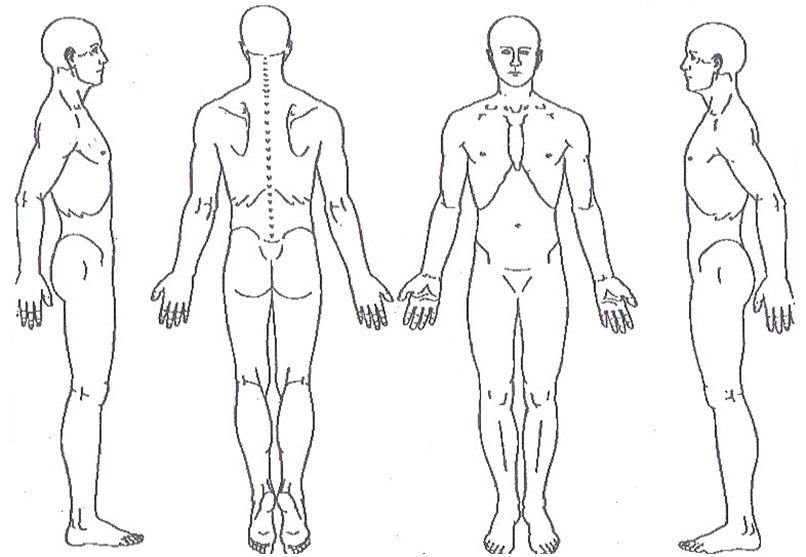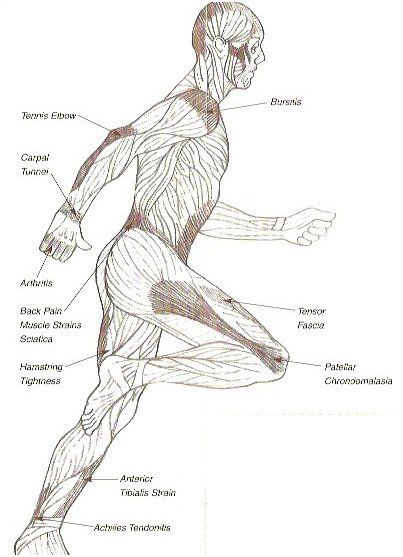
The McKnight Protocol • Proactive Programs and Research in Sports Injury Prevention
Injury assessment
Repetitive stress injury
No one is immune to repetitive stress
Prevention approaches for group or individual repetitive stress injury are similar:
- Each must garner a perspective of the repetitive activity.
- Each must gain a perspective of how their individual body feels, or how many of the group has been affected similarly. This is often best done with the expertise of a bodyworker trained in prevention methodologies.
- Each must take care to change the routine for self care.
- Athletes should have an assessment with a trained bodyworker at the beginning, middle, and end of the sporting season.
Gaining perspective to assess repetitive stress injury
Without a perspective no one has complete and accurate assessment of their own repetitive stress injuries. This perspective is our ability to see, hear, feel, or become aware through the senses. Massage therapy is a treatment modality that aids in gaining that perspective.
Therapists trained to assess preclinical injury should also gain a perspective of the body and convey that perspective to the client. Palpation is a form of touch employed by a professional to assess clinical and preclinical injury. This has been the case for years, however, the Ron McKnight Protocol adds consistent labeling of identified preclinical anomalies.
To date, there has been not consistent labeling of anomalies, so if two practitioners examine a person, even though their experience maybe the same, the label(s) they give in assessment will differ creating a false-positive assessment and treatment. Consistent labeling creates an associative experience that lessens false assessments.
We have the ability to see, hear, feel, or become aware through our senses.
Use a preclinical self-assessment body chart
There are three parts to assessing for preclinical injury prevention:
- Perspective from a trained professional
- Inventory and extraction of daily routine activities
— Examine the muscle groups most used doing those activities
— Inventory the location of pain and discomfort; note where it hurts and be specific - Self perspective


I’ve seen too many kids injured in sports before they’re even teenagers. I could never make my son play less baseball – he just loves the sport too much – but at least I can help him prevent an overuse injury. Thank you, Ron McKnight, for looking out for young athletes!
— Angela Forsyth —
©2022 Center for Therapeutic Massage and Athletics, Inc. | All rights reserved | 74 Sunset Hill Road, Bethel CT 06801
Website by Hull Graphic Design LLC






